Lethal Lizards
The existence of venom in so many animals has long challenged creationists. How did it show up in a very good creation?
“The only good snake is a dead one. Kill it before it kills you.”
The familiar disdain for snakes most likely stems from the assumption that all snakes are venomous. In reality, of over 3,700 snake species, only roughly 600 species are venomous, and only about 200 species are considered seriously dangerous.
Venom in nature, particularly snake venom, has long presented a challenge for creationists to explain the origin of these deadly designs. But the “problem” is much wider than just snakes, touching almost every class of animals. For a change, let’s look specifically at lizards to illustrate and discuss this broader challenge.
People are more tolerant of lizards than of snakes, perhaps because lizards have legs (though there are exceptions). Many folks are creeped out by a snake’s mysteriously quick, legless movements. The association of snakes with the serpent in the garden doesn’t do much for their PR either. On the other hand, the personable gecko on TV frequently tells us how to save money on car insurance. And the most important thing lizards have on their side is that they aren’t venomous . . . right?
Well, not so fast. Some lizards are venomous. Yet of over 6,500 species of lizards, only a handful are really dangerous. So they’re not likely to catch up anytime soon with venomous snakes in numbers, venom delivery, or toxicity. But the list of lizards with jeopardous juices is growing, leading creationists to further consider the origin of venom in God’s design. What’s the nature and toxicity of lizard venom? When and why do they use it? How do they inject it? We need to look at all this in light of Scripture.
Lethal Lizards
For quite a while, the list of venomous lizard species stood at a grand total of two: the Gila monster (Heloderma suspectum) and the Mexican beaded lizard (Heloderma horridum). These two large, lumbering lizards are closely related cousins. Their combined habitats extend from the Southwest US through Western Mexico and into Northern Central America.
While venomous snakes have venom glands in their upper jaws, these two have venom glands in their lower jaws. And their venom-delivery apparatus isn’t as fancy as a snake’s. These two brutes lack specialized muscles surrounding the venom glands, which snakes use to inject venom through ducts connected to hollow hypodermic fangs. Instead, the Gila monster and Mexican beaded lizard have tiny grooves running along the inner surface of their lower teeth. When they bite—and boy, do they bite!—they hang on and chew. It’s excruciating, so I hear.
They’re good at what they do, given that they live in and contribute to a fallen creation. But the lizards can’t take any credit. They’re just using the design God gave them. Their venom leaks out of the venom glands, and thanks to their chewing, the venom moves up the grooves into the wounds, assisted by capillary action (when fluid moves through tiny tubes or grooves due to surface tension).
When they bite, the lizards often flip upside down. With their lower jaw on top, gravity presumably helps the venom flow into the wound. These lizards munch mostly on reptile and bird eggs, along with a variety of small vertebrates and insects (nothing that puts up a big fight), so scientists think that the venom isn’t used to subdue prey. Instead lizards use it to defend against predators and unfortunate, curious humans.
The brightly colored scale patterns of this lizard family (family Helodermatidae) indicate that their venom is defensive. Brightly colored skin is often associated with toxic animals. It’s a warning label, a flashy billboard display to potential predators, saying, “Don’t mess with me, or you’ll be sorry.”
Venoms can be exceedingly complex chemically. Much study has been done to itemize the various chemical components and the havoc each wreaks on the victim. The Gila monster and Mexican beaded lizard have what is called hemotoxic venom. This nasty brew of chemicals, some of which are digestive enzymes, destroys tissues and particularly blood. Typical symptoms include pain, swelling, low blood pressure, nausea, vomiting, weakness, and sweating, but in worst-case scenarios, victims also experience respiratory failure.
A Little Bang in Its Bite
Another lizard found to have venom as recently as 2005 is the bearded dragon (Pogona barbata) belonging to the Iguanians (a mostly vegetarian group composed of several families). Though venomous, this member is a popular pet from the continent down under—Australia. Bearded dragon venom glands are situated on both upper and lower jaws, unlike other venomous lizards or snakes whose glands are on only the lower or upper jaw. They deliver small quantities of mild venom when they bite. Don’t be alarmed, but their venom is like a mild form of rattlesnake venom. Though there is usually rapid swelling and bleeding aplenty, the venom is still fairly harmless to humans and nothing to worry about.
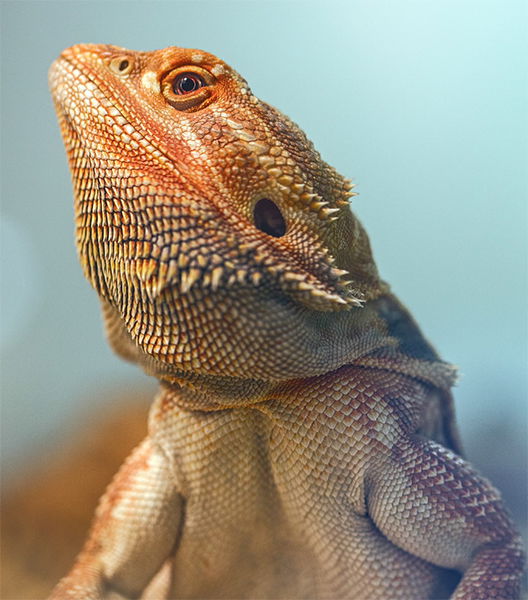
Bearded Dragon: People once thought the bearded dragon was not venomous. However, in 2005, Australian scientists discovered a mild venom in its bite that is capable of killing small prey.
Killers from Komodo
In 2009, Australian biologist Bryan Fry and his team published that the largest monitor, the Komodo dragon (family Varanidae), located on the island of Komodo and other Indonesian islands, also possesses venom. Komodo dragons are predators and can inflict bites in prey too large to subdue by force. For many years, scientists thought their deadliness was only due to pathogenic bacteria in their saliva that would eventually kill their prey through infection. However, Fry discovered that they do indeed have venom that kills, just not as swiftly as many snakes. After further testing, it turned out that other monitor species have similar venom to that of their king-size cousin, the Komodo.
So where do the dragons store their drugs? They have 12 venom glands in their lower jaw (like the helodermatids), six on a side. Tiny grooves between the teeth carry the venom by capillary action (again similar to the helodermatids). The combined venom from the glands adds up to only a little more than a measly 0.04 ounces (1.2 ml). Not much for a giant lizard, but it gets the job done. To animals on the dragon’s menu, it is very toxic, though it doesn’t seem to be very toxic to humans.
Still, you don’t want to be bit by a Komodo dragon. Their teeth are big and serrated. A far cry from the sophisticated injection system of vipers and elapids, the chomp-and-yank movement of these dragons allows the venom to wick and work into the wounds.
The venom induces a drop in blood pressure and profuse bleeding, causing the victim to go into shock (which inhibits organs from working properly due to poor blood supply). The deer, pig, or water buffalo finally succumbs to the venom’s destructive effects and the bleeding from horrid bite wounds. The bacteria probably speed the victim’s demise.
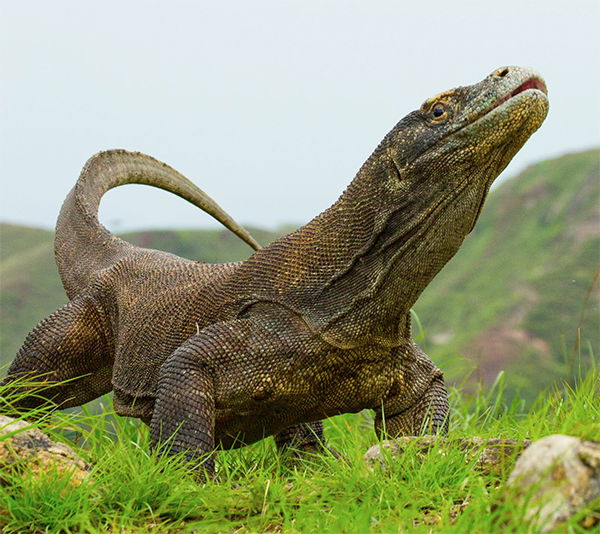
Komodo Dragon: For many years, scientists thought bacteria in the Komodo dragon’s saliva killed its prey. Recent research, however, confirmed the lizard produces venom that is highly toxic to animals but not very harmful to humans.
Venom and the Very Good Creation
This brief overview of venomous lizards only scrapes the surface of this new avenue of research. Scientists now believe that a hundred or so lizard species may actually have toxin-secreting oral glands (a less alarming way to say “venom glands”) that they use for defense or attack to some degree.
I’ve studied biology for most of my life, and it didn’t take me long to realize that many, many creatures are divinely designed with sophisticated weapon systems. These include fangs, venom, and all the predatory behavior that goes with them. Even ecosystems that appear to be beautiful, harmonious, and balanced are loaded with complex creatures killing each other. How did our world become so deadly?
Whether venom comes from a snake, lizard, or other creature, whether it is mild or deadly, slow- or fast-acting, we should reflect on venom’s function in the light of Scripture. Adam’s deliberate disobedience plunged the whole creation into this debacle, and ever since “the whole creation has been groaning” (Romans 8:22). Venom vividly demonstrates the consequences of the fall. But by any of death’s horrible forms—venom injection, disease, violence, or old age—humans and animals die because sin entered the world about 6,000 years ago. Romans 6:23 explains, “The wages of sin is death.”
How could God declare creatures “very good” if they were loaded with weapon systems and toxic chemicals that cause sickness and death?
You might wonder why God made so many venomous creatures if at the end of creation week he called his creation very good (Genesis 1:31). How could God declare creatures “very good” if they were loaded with weapon systems and toxic chemicals that cause sickness and death?
God created all animals, including the monitors, helodermatids, and iguanians, as vegetarians (Genesis 1:30). So when did they become so deadly? Did he create predators after the fall? No. He finished creating on day six. Did he create vegetarians before the fall and transform them into predators by installing their weapon systems after Adam sinned? Good questions. God created many animals (and plants) with incredible genetic flexibility to change their shape, physiology, and behavior, sometimes even radically. Of course, mutation and natural selection can delete, modify, shuffle, and swap existing genetic information to generate more diversity and variations on divinely designed systems, but they can’t create totally new specified genetic information from scratch—only God can.
However, I believe God created all his creatures (at the moment of creation) with the necessary genetic information to transform into creatures that looked and behaved radically different. At the fall, I believe that God (either through natural or supernatural cause and effect) turned on the appropriate genetic information to transform certain vegetarian creatures into predators or prey with amazing defense mechanisms. This means all their weapon systems developed along with the necessary behavioral changes needed to wield them effectively.
I’m on firm ground both biblically and biologically. There are countless examples of animals and plants that use the same DNA to build radically different shapes, structures, or functions. Two examples are the metamorphosis of tadpoles into frogs and caterpillars into butterflies. This is so common that we rarely marvel at how amazing this process truly is! Think about it: A tadpole has a radically different body, feeding habits, physiology, and mode of movement from its final form, the frog. If we didn’t know about this phenomenon, we would assume that the tadpole was an entirely different creature than the frog. But it is the exact same creature with the exact same genetic information. By analogy, it is not hard to imagine how a radically different creature can be produced from the same DNA.
What Is the Difference Between Poison, Toxin, and Venom?

Poison
Any chemical that can adversely affect the proper functioning of an organism, causing illness or death.
Toxin
Any poison that is manufactured by living organisms. (Therefore, all toxins are poisons, but not all poisons are toxins.)
Venom
A toxin that is injected into creatures through a bite or sting. (Creatures that inject venom are venomous.)
The Antidote to a Sin-Cursed World
Compared to the tadpole and caterpillar metamorphosis, front-loading a vegetarian lizard with the necessary genetic information to become a predator, specially armed to the grooved teeth with venom glands, is not at all difficult for our great God. The only thing that was difficult was when Jesus obeyed the Father by going to the cross to redeem us from our sin. He said, “My Father, if it be possible, let this cup pass from me; nevertheless, not as I will, but as you will” (Matthew 26:39). We inherited a sin nature from our father, Adam. The same sin subjected the entire creation—venom glands and all—to its bondage to death (Romans 8:20–22).
The gospel is the antidote. By trusting in the Lord Jesus Christ, we can receive forgiveness for our sin and be healed from its venomous effects. Beyond that, we all can look forward to the day when the gospel will have its full redemptive effect on the entire creation.
Venomous lizards remind us that something is not right and needs to be restored. “The creation itself will be set free from its bondage to corruption and obtain the freedom of the glory of the children of God” (Romans 8:21).
Venomous Variety
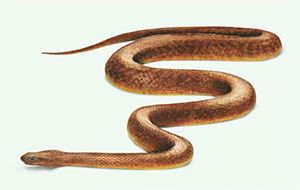
Inland Taipan Snake (Australia)
Injection Method
This snake attacks its prey with a series of quick-fire, accurate strikes. It often snaps its jaws fiercely to inflict multiple wounds, up to eight in the same attack.
Venom Strength
Researchers estimate that the venom in one bite can kill at least 100 humans. The venom is a combination of toxins that can cause kidney failure, hemorrhaging, muscle breakdown, and nerve failure, resulting in death. The venom also contains an enzyme that speeds absorption. Without antivenom, a victim can die in as little as 30–45 minutes.
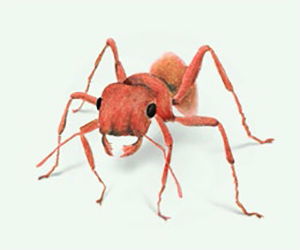
Harvester Ant (Southwestern United States)
Injection Method
Some species have stingers with barbs that break off in the sting site. The ant latches on by its mandibles then repeatedly stings the victim. The venom contains a pheromone that chemically alerts other ants to come join the attack.
Venom Strength
The Maricopa harvester ant in Arizona possesses the most toxic insect venom—20 times stronger than a honeybee. The pain and swelling from a bite can last up to four hours, and this venom can be fatal to victims who are allergic.
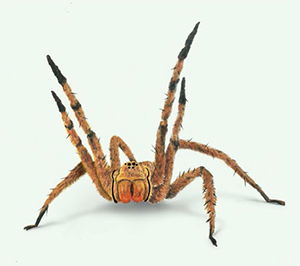
Brazilian Wandering Spider (South and Central America)
Injection Method
This spider bites its prey with fangs. Though considered the most venomous spider in the world, its bites are infrequent. An antivenom is available but rarely necessary since many of the spider’s bites are dry.
Venom Strength
Victims may experience pain at the bite site and within 30 minutes might experience high blood pressure, irregular heartbeat, cramping, blurred vision, hypothermia, seizures, and shock, leading to death.
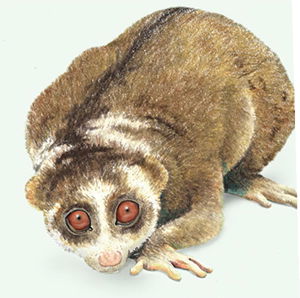
Slow Loris (Southeast Asia)
Injection Method
This primate has venom in its saliva and also in a sweat gland on its arm, which it licks. When it chomps down on prey, its needlelike teeth (dental combs) inject the venom.
Venom Strength
The slow loris venom may cause painful swelling and sometimes, but rarely, sends an allergic victim into shock. The slow loris’ bite is unpleasant because it emits a rotten smell. Additionally, some researchers believe the venom contains an anticoagulant that makes it difficult for a bite wound to heal.
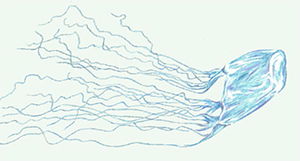
Sea Wasp Box Jelly (coastal waters from Australia to Vietnam)
Injection Method
This jellyfish’s tentacles are covered in nematocysts which, when triggered, explosively stick the victim with thousands of microscopic hypodermic needles that inject venom. These tentacles can sting even after disconnected from the jelly’s body.
Venom Strength
As one of the deadliest jellyfish in the world, the amount of venom in just one sea wasp jelly can kill 60 adults. The venom contains toxins that cause acute pain and attack the heart, nervous system, and skin cells. The venom causes cells to become porous, allowing potassium leakage, which quickly leads to cardiovascular collapse. Death can take place within 2–5 minutes.
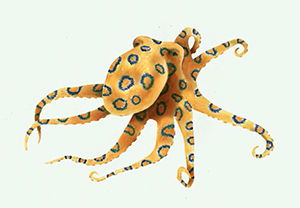
Blue-Ringed Octopus (Pacific and Indian Oceans from Japan to Australia)
Injection Method
When it feels threatened, this octopus bites its victim, secreting venom along with saliva into the bite wound. The bites are so small and painless, victims sometimes don’t even realize they’ve been bitten until it’s too late.
Venom Strength
Along with nausea, blindness, and heart failure, this venom blocks nerve signals, resulting in full paralysis. Since the lung muscles don’t work, victims usually die from asphyxiation but can survive if hooked to a ventilator until the venom leaves their body. This tiny octopus, less than 8 inches (20 cm) long, carries enough venom to kill 26 adult humans within minutes. No antivenom exists. (The octopus doesn’t actually make venom itself but rather relies on bacteria that live in its salivary glands.)
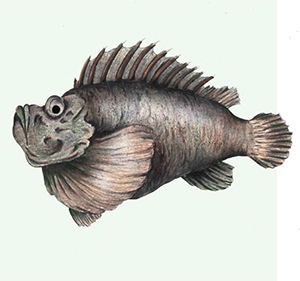
Stonefish (Australia)
Injection Method
Needlelike spines on their dorsal fins stick up when stonefish feel threatened. These spines inject venom according to the pressure on them. Stonefish also have a nonvenomous spine called a lachrymal saber, which they can point out from their face like a switchblade knife.
Venom Strength
In addition to an excruciating sting, if left untreated, the venom causes swelling, blisters, abdominal pain, fatigue, shortness of breath, abnormal heart rate, delirium, paralysis, shock, seizures, and ruptured blood vessels. Death can occur within an hour from heart failure.
Answers Magazine
May–June 2019
Venom! It’s shockingly common in nature. Is a good Creator responsible?
Browse IssueRecommended Resources

Answers in Genesis is an apologetics ministry, dedicated to helping Christians defend their faith and proclaim the good news of Jesus Christ.
- Customer Service 800.778.3390
- Available Monday–Friday | 9 AM–5 PM ET
- © 2026 Answers in Genesis





